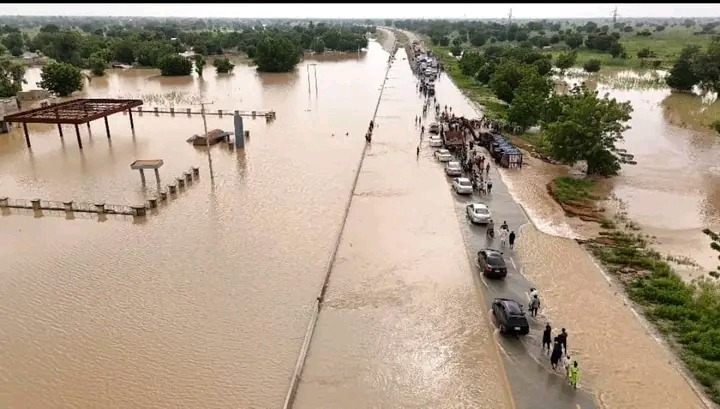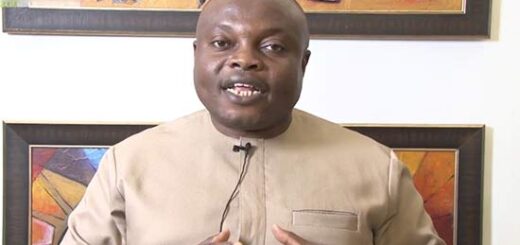Flooding worsens despite N180bn spent on dams
 Amidst plans by the Federal Government to allocate fresh funds for conducting integrity tests on all dams in the country, findings by The PUNCH have shown that a total sum of N179.77bn was allocated for the construction and rehabilitation of dams across the country over the past 10 years.
Amidst plans by the Federal Government to allocate fresh funds for conducting integrity tests on all dams in the country, findings by The PUNCH have shown that a total sum of N179.77bn was allocated for the construction and rehabilitation of dams across the country over the past 10 years.
This is according to an analysis of budgetary allocations disbursed to the Federal Ministry of Water Resources and other related agencies between 2015 and 2024.
This amount indicates that significant financial resources have been committed to improving the nation’s dam infrastructure.
However, the recent collapse of the Alau Dam may suggest that the funds allocated for it may not have been properly disbursed to the implementing agency or used effectively.
I Lost My Dad And Shoe Making Found Me – Lady Cobbler0:01 / 1:01
The appropriation budget was used for this report because documents of budget implementation report were not available.
the forced focus on government spending on dams emerged after a flooding incident that overtook 50 per cent of Maiduguri following the failure of the Alau Dam.
This incident, triggered by several downpours, resulted in catastrophic flooding in Borno State, claiming over 30 lives and displacing at least 400,000 people.
The dam, built in 1986 to serve irrigation and domestic water needs in Maiduguri, affected Kebbi, Kaduna, Sokoto, Katsina, Kwara, and Plateau, as well as parts of Cameroon after its collapse.
Experts say the dam collapse was bound to happen as the authorities had turned a deaf ear to prior warnings from environmentalists in and around the region.
According to the experts, there had been cracks in the dam’s walls, and erosion had taken over the embankments, a result of years of abandonment, which weakened its structure.
Similarly, a former Director of Northeast Development Commission, David Kente, had warned that the Alau Dam was in a precarious condition and on the brink of collapse, adding that the region could face even more catastrophic flooding without urgent repairs after the rainy season.
Sequel to the disaster, President Bola Tinubu directed a comprehensive integrity test on all dams in the country.
Nigeria currently has about 323 dams, including small, medium, and large dams, which are used for water supply, flood control, and power generation, among others.
Some of the dams include Bakolori and Goronyo dams in Sokoto State, Challawa and Tiga dams in Kano State, Dadinkowa Dam in Gombe, Ikere Gorge dam in Oyo, Jebba, Kainji and Shiroro in Niger, Jbiya and Zobe dams in Katsina, Kafin Zaki in Bauchi, Ede-Erinle Reservoir in Osun, Asejire in Oyo, among others.
Per the drafting of the budget, the Federal Ministry of Water Resources is responsible for executing these projects and the Chad Basin River Development Authority, under this ministry, serves as the implementing agency.
A breakdown of the budget between 2015 and 2024 showed that the government allocation for the preservation of the dams surged by 1,524.5 per cent from N2.72bn in 2015 to N44. 25bn within 10 years, highlighting a steady increase in budgetary allocations.
The report showed that a budget of N12.33bn was approved for dams in 2016, signalling an increase of 352.82 per cent from the allocation given in 2015. In 2017, the government allocated N19.986bn and N28.43bn in 2018.
This funding however reduced to N7.001bn in 2019 before it increased further by 116.2 per cent to N15.14bn in 2020.
In 2021, the government expended N16.72bn for the proper functioning of the dams and N20.95bn in 2022.
The figure, however, dropped to N12.24bn in 2023 before an astronomical increase to N44.24bn in 2024.
Analysing the line items in the 2016 budget, the government allocated N10m for the rehabilitation of Alau Dam while N6m was apportioned for the procurement and installation of river gauge readers at the dam.
It also disbursed N500m for construction of earth dam: distribution and reticulation implemented in phases in 2018.
Similarly, N50m was disbursed for the counterpart funding for trimming programme on dam safety and N42.5m for development of standards for dam construction in Nigeria.
For the Alau Dam, the Ministry of Water Resources allocated N24m for its rehabilitation.
Also, N40m was budgeted for procurement of equipment for bathymetric survey of existing dams, N400m for Anka Earth Dam and N40m for the reconstruction of old Muri Dam.
In the 2019 budget, the government allocated N349.93m for the construction of Galma Dam, N134.63m for the construction of Jare Earth Dam, N250.03m for the construction of Ile-Ife Dam and N201.94m for the construction of Ingawa/Dallaji Dam. The government budgeted N13.46m for dam safety monitoring, N13.46m for viability assessment of dams, N13.46m for a compendium and digital map of dams in Nigeria and N160m for the rehabilitation of 14 dams.
Also, the construction of Otukpo multipurpose dam was to gulp N303.88m, and N329.09m for the construction of Auna (Kontagora) earth dam and N60m for Alau Dam rehabilitation.
Checks by our correspondent also showed that these line items remained the same all through the reviewed by with an increased amount.
Further analysis also showed that in 2023, the government allocated money for the completion of various dams projects including the Itsi Dams, Sasa Earth Dam, Ojoga Dam, Kishi Dam, Inyishi Dam, Ekuku Dam, Barkin Ladies Dam, Wannune Dam, Nkari Dam, Ivo Dam projectsprojects, Ile-Ife Dam and Galma Dam.
In July, the Federal Government requested for a $500m loan from the World Bank to improve dam safety and enhance water resource management across the federation.
The proposed approval date for the SPIN project was September 26, 2024 but is yet to be approved by the World Bank.
The loan, if approved, is expected to address the country’s water security challenges and boost agricultural productivity through the Sustainable Power and Irrigation for Nigeria Project.
According to a World Bank’s Project Information Document for the proposed project posted on its website in July, the SPIN project focuses on four critical areas, namely institutional strengthening and capacity building; irrigation modernisation; improvements in dam operations and safety; and project management.
FG intervenes
Following the Alau Dam collapse, the Federal Government established a technical committee to reassess the integrity of the Borno State dam and others nationwide on September 23.
The exercise would culminate in detailed designs and recommendations for the overall reconstruction of the 38-year-old dam for future use, Minister of Water Resources and Sanitation, Joseph Utse, told State House correspondents after the Federal Executive Council meeting at Aso Rock Villa, Abuja.
Utsev noted that the Council deliberated extensively on the flood situation across the country, with emphasis on the Maiduguri flooding.
His announcement came just one week after President Bola Tinubu assessed flood-devastated communities in Borno State.
Announcing the new committee, the water resources minister said, “Today, the Federal Executive Council has constituted the committee to examine not only the Alau Dam but also other dams in the country, reassess them, and make recommendations that will solve the challenge of flooding and also make use of the available dams.”
However, the minister did not state the amount earmarked for the reassessment or the timeframe the committee was given to conclude its study.
The Minister of Information and National Orientation, Mohammed Idris, said Utsev would chair the new committee, with members drawn from the cabinet.
Idris stated, “It is a technical committee to review all dams in Nigeria as a result of what we have seen in Borno, and also the kind of activities we are seeing around various dams scattered around the country.
“The committee has now been set up so that we focus on that and mitigate the possibility of the kind of disasters that we have seen in recent times.
“The committee will have the Minister of Water Resources and Sanitation as chair, Minister of Finance, Minister of Works, Minister of Housing and Urban Development, Budget and Economic Planning, Office of the National Security Adviser, and, of course, the Minister of Information to provide you with the necessary information that you require from time to time.”
In a similar vein, the FG approved the establishment of a Disaster Relief Fund that, it says, would enable it to “build greater resilience” in preventing and responding to natural disasters nationwide, especially floods.
It said the DRF would consider the unique threats posed by Climate Change by pooling funds from a broad spectrum of public and private sector players and international donors.
Old dams
Meanwhile, the Executive Director, Renevlyn Development Initiative, Philip Jakpor, said most of the dams in Nigeria were old and not hydraulic.
Jakpor also noted that there are significant integrity concerns regarding the dams.
He said, “Hydraulic dams are dams with substantial obstacles built on the perimeter of the river where the inlets come in in order to divert water or to impound it. Unfortunately, most, if not all the dams in Nigeria, are not hydraulic.
“Aside from that, most of Nigeria’s dams are old and there are integrity issues around them. That is why the Alau Dam collapsed effortlessly due to breaches that different sources said had been noticeable for nearly 10 years yet no repairs were effected by the Ministry of Water Resources even with successive governments.
“The worst part of our dam management system is that the water levels are not monitored adequately to ensure they don’t get to dangerous thresholds. This failure is what caused the inundation of Maiduguri, 70 per cent of which was under water immediately the dam collapsed two weeks ago.”
He, however, noted that there was the need for a comprehensive integrity audit of the existing dams with a view to upgrading them to effective standard.
“The government must also tell Nigerians the status of the Dasin Hausa Dam which is supposed to backstop flow of water from the Lagdo Dam in Cameroon. For now, what we see is clear unseriousness, which continues to cost Nigeria lives and needless economic losses,” he stated.
Also, the Executive Director of Environmental Defenders Network, Chima Williams, empahasised that apart from the Kainji Dam, others were poorly maintained.
Williams said, “Apart from the Kainji dam, perhaps because of its location and coverage, the story is almost all the same for all dams in the country. The flooding in Borno State was as a result of the breakdown of the Alau Dam. So, if the dams were maintained, there wouldn’t have been any issue of flooding, and of course, we are hearing now that the Cameroon dam (Lagdo dam) is open, and the one that Nigeria was supposed to build to act as a buffer, to stop it from flooding Nigerian communities, is not built. The ones that are built are not being protected and preserved, the ones that are supposed to be useful, are not built.
“So, the issue is, for every facility, it has a lifespan, either the materials, or the facility itself in totality. If effective monitoring is conducted on the dams, we will see the ones that are leaking, the ones that are getting weak, but we don’t care, nobody conducts such integrity checks for facilities.
“The knowledge of the problem is half solution of that problem. We know that our dams are not properly maintained. There is already a knowledge that we are all well aware, both our government and our citizens. So the government should review the dam situations, all the dams in Nigeria, review their situation to either build it up or, in fact, some dams can be closed up if it’s no longer useful, and another pathway created for the water that is supposed to gather there.
“If we do not check, we won’t find the problem, and if you don’t know the problem, you won’t find any solution. So we need to look at the problem and then proactively and intentionally make a design to solve that problem. That’s the only way we can come out of the menace that we are faced with.”
Neglected dams
Meanwhile, residents of Dadinkowa have expressed concerns over flooding caused by the Dadinkowa Dam, and called on the government to conduct an impact assessment to ensure no harm was caused.
“We are begging them to learn from what happened in Alu dam in Maiduguri. The water recently covered the dam and if care is not taken may have negative impact on the structure,” Mobido Umar, a resident, said.
The Executive Secretary, Gombe State Emergency Management Agency, Abdullahi Haruna, couldn’t confirm when the last maintenance was carried out on the dam.
“I don’t know when the last maintenance was done, but the ministers were here and they said no cause for alarm. Our men are across the 11 Local Government Areas, we don’t have any emergency alerts.”
However, an official of the Upper Benue River Basin told our correspondent that the last time the dam was renovated was in 2020.
The official said, “That was when work was completed and we were waiting for the President for the inauguration, which he didn’t do till close to 2023 when a minister commissioned it.”
Managing Director of the National Hydroelectric Power Producing Areas Development Commission Abubakar Sadiq stated earlier that the dam was on the verge of collapse.
But Utsev, who led a delegation on an assessment of the dam, said the report was unfounded.
“We want to tell Nigerians that the reservoir is functioning normally, the spillway and the mechanical components are in normal state. There is no cause for alarm.”
Also speaking, Minister of State Water Resources and Sanitation, Bello Goronyo, warned non-professionals to desist from commenting on areas that required expert input.
Goronyo said, “I just want to emphasise that people who are not knowledgeable in this area, people who don’t understand how the hydrology of a given dam works, should desist from speaking to the media on issues bordering on water.”
The Tiga Dam in Kano State, constructed in 1974 in an attempt to respond to the recurring incidents of drought and to improve food security through irrigation farming, covers an area of 178 square metres with a maximum capacity of nearly 2,000,000,000 cubic metres.
The PUNCH learnt the last time the dam witnessed a major maintenance or rehabilitation was in 2021.
“The dam was closed November 1, 2021 for repairs and it took the contractors about five months to carry out the maintenance works,” an official, who works with dam, said.
Speaking further, the official said the Challawa Geoge Dam, which was built in 1992 by Kano State and later handed over to the FG, has a full storage capacity of 930,000,000 cubic metres and was last rehabilitated around 2017 during the second tenure of ex-President Muhammadu Buhari.













